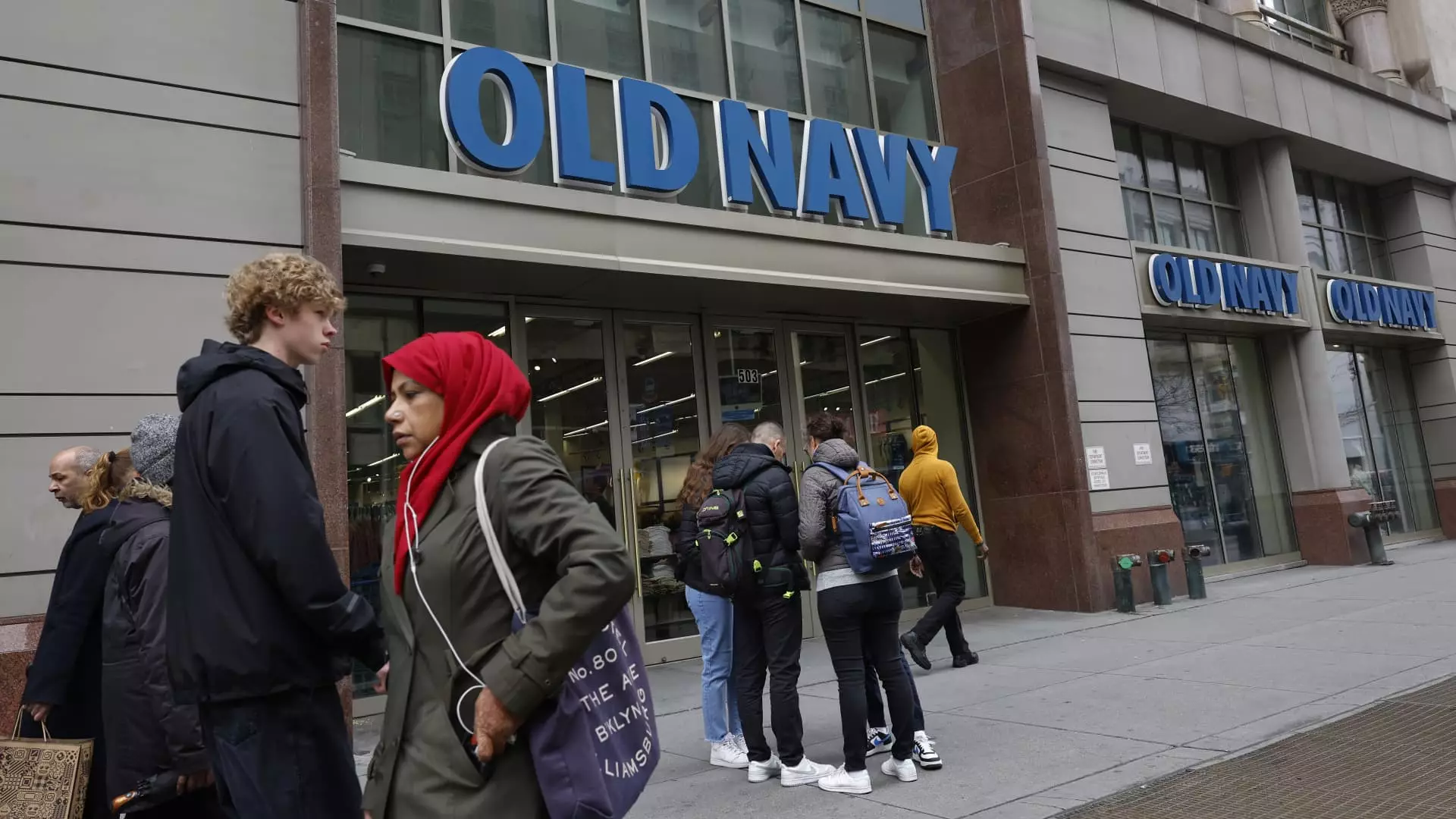The retail apparel sector is no stranger to fluctuation, and Gap Inc. has had its share of ups and downs recently. In its latest fiscal quarter, the company faced adverse weather conditions, specifically hurricanes and unseasonably warm temperatures, which posed significant challenges to sales. However, amidst these difficulties, Gap Inc. still managed to report results that exceeded analysts’ expectations, prompting an optimistic adjustment of its annual guidance—an impressive feat for a major retail player.
Despite the turbulent climate, Gap Inc. demonstrated resilience by reporting third-quarter results that surpassed Wall Street’s forecasts. The company, which encompasses well-known brands such as Old Navy, Banana Republic, and Athleta, announced that it anticipates a sales growth of 1.5% to 2% for fiscal 2024, a revision from the previously expected “slight” increase. This positive shift contrasts sharply with the modest 0.4% growth forecasted by analysts at LSEG, suggesting that Gap’s strategies may be yielding favorable results just in time for the critical holiday shopping season.
The company’s quarterly earnings per share hit 72 cents, significantly better than the expected 58 cents, and revenue reached $3.83 billion, a slight rise from $3.78 billion the previous year. This uptick in financial performance points to a potential rebound for the largest specialty apparel retailer in the U.S., signaling strengthened consumer interest despite external factors that might ordinarily dampen sales.
The adverse weather conditions had tangible effects during the quarter. With hurricanes and storms leading to nearly 180 store closures, CEO Richard Dickson noted that overall store sales fell by 2%. Notably, the Old Navy brand, which plays a central role in Gap’s portfolio, felt the impact the hardest due to its focus on family-oriented products heavily reliant on seasonal demand. The warm weather alone deducted about 1 percentage point from overall sales, particularly affecting the children’s clothing segment.
However, the tides appeared to turn as conditions improved. Dickson expressed optimism about the subsequent recovery in sales as the company headed into the seasonally crucial holiday period. His comments reflect a broader narrative of resilience and adaptability that many retailers are striving for amid challenging market conditions.
Since taking the reins just over a year ago, Dickson has spearheaded efforts to rejuvenate Gap Inc.’s market presence, focusing on strengthening its brand identity and product relevance. His approach has involved nostalgic marketing strategies and collaborations with celebrities, allowing the company to reconnect with its customer base. This pivot seems to be paying off, as evidenced by the notable continuous growth across the company’s brands over the past four quarters.
As Dickson noted, Gap’s brands currently enjoy a heightened sense of identity and a well-practiced operational playbook that emphasizes quality product offerings, better pricing strategies, customer experiences, and overall excellence in execution. These foundational shifts are crucial for sustaining long-term growth and profitability.
Diving deeper into the individual brands within the Gap portfolio reveals varying degrees of success. Old Navy, despite being the largest brand by revenue, recorded only a 1% sales increase and flat comparable sales amid unfavorable conditions. Conversely, Gap’s eponymous brand thrived with a 1% sales growth and a notable 3% rise in comparable sales, outperforming analyst expectations thanks to improved marketing efforts.
Banana Republic faced its own set of challenges, with only a 2% sales increase against a slight decline in comparable sales. This highlights a need for the brand to solidify its core offerings and revitalize its presence in the competitive apparel market. In contrast, Athleta showcased a robust performance, with sales rising 4% and a 5% increase in comparable sales, signaling a recovery from the significant downturn experienced during the previous year.
As the holiday season unfolds, Gap Inc. finds itself at a pivotal juncture. With reassured guidance and a clearer brand strategy, the company appears poised to navigate through ongoing challenges effectively. The key will lie in maintaining flexibility and responsiveness to market demands, all while fostering customer engagement through targeted marketing and product development initiatives.
The optimism shared by Gap’s leadership is encouraging, but it will demand sustained effort and vigilance to build upon recent successes. For now, the company seems to be on a promising trajectory, but continued focus on innovation, consumer trends, and brand identity will be crucial in shaping the future of Gap Inc. and its key franchises.

